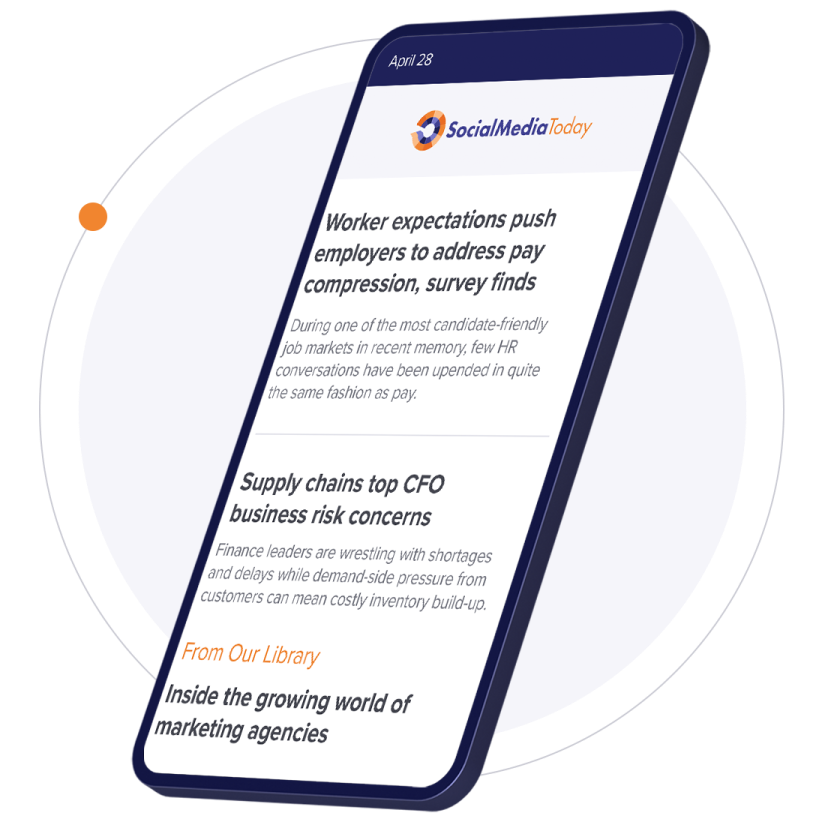Despite widespread backlash over Twitter’s decision to remove blue checkmarks from legacy verified profiles in the app, it seems that Elon and Co. are pushing ahead with their subscription plans – even if the Twitter Blue take-up numbers have not seen the expected jump as a result of the change.
Yesterday evening, Elon tweeted this:
Verified accounts are now prioritized
— Elon Musk (@elonmusk) April 25, 2023
That relates to Twitter now prioritizing tweets from paying profiles in the main ‘For You’ feed, and in tweet replies - which means that Twitter Blue subscribers, which currently make up 0.26% of Twitter’s total user base, are now going to see much more exposure for their tweets in the app.
Which seems problematic, in various ways.
For one, if you’re prioritizing paying users over, say, celebrities, that’s going to make your feeds a lot less engaging. People come to Twitter to see the latest tweets from big name accounts, and reducing their reach is probably not the best way to maximize interest in the app.
Indeed, according to research conducted by Pew Research in 2021, just 25% of Twitter users produce 97% of all tweets, which underlines how reliant Twitter is on its most active voices for engagement.

According to Twitter, it’s actually now even more unbalanced, with the top 20% of users accounting for almost all tweets.
Twitter needs these top users to keep tweeting, which makes taking away their checkmarks, and de-prioritizing their replies, a significant risk.
By amplifying paying users, Twitter’s shifting the internal balance, which Musk and Co.. may think is fine, given that most paying subscribers are likely more aligned to Musk’s own ideological perspectives. But it actually goes against years of what social platform trends have told us is the best way to go in increasing in-app engagement.
For example, back in 2013, when Facebook first rolled out its News Feed algorithm, a key aim of its algorithmic feed was to weed out low-quality posts, and combat the rise of spammy operators looking to use the platform for reach.
As explained by Meta at the time:
“Every day people see content from millions of Pages on Facebook in their News Feeds. Our goal is to show the right content to the right people at the right time so they don’t miss the stories that are important to them. As part of that we want to make sure that the best quality content is being produced, surfaced and shared.”
The News Feed algorithm, despite being heavily criticized, has proven to be an effective way to increase user engagement, which has seen all social apps adopt similar sorting, in order to boost top-performing posts, and supress less engaging updates.
But now, Twitter’s giving all users the opportunity to boost their own posts in-stream. What do you think’s going to happen then?
As noted by a Reddit user in response to Twitter’s latest update:
“The main ‘selling point’ of [Twitter Blue] is to boost post visibility. The service inherently appeals only to people who both a) care extremely deeply about their posts being seen, and b) make posts that inherently are unappealing to other Twitter users (since people with appealing/interesting/funny/not-weird posts would be able to naturally grow an audience on the platform if they want to). So pretty much every single blue check is a hyper-online weirdo who is deeply bad at posting, despite being obsessed with Twitter metrics.”
Already, users are reporting an increase in crypto-spam and right-wing talking points within amplified Blue subscriber tweets – the very same junk that feed algorithms were instituted to weed out, because it impacts user engagement and interest. But Twitter’s now giving these users a boost – it’s actively devaluing its own service for way, way less money (via subscriptions) than it generates through ads.
Twitter’s main business is audience reach, it makes money based on how many people use the app, which is why algorithmic sorting, despite promoting and demoting content, makes sense. Musk and Co. are trying to move away from this, with a view to reducing the company’s reliance on ad spend. But again, with so few users subscribing to Twitter Blue, it’s not working – and as celebrities actively campaign against the change, the future prospects of the offering are also not great.
It seems inevitable that this will have a negative impact on growth, and with Twitter’s ad revenue already down 50%, it seems like this could also become a bigger impediment on the bottom line, the longer Twitter pushes ahead with it.
Which is why it re-added blue ticks for accounts with over a million followers, and it wouldn’t be surprising to see Twitter re-add them to those with 500k followers as well, as it looks to ensure more popular tweets get amplified.
Effectively, allowing users to pay for amplification is a flawed approach – which is why Meta dropped it from its Meta Verified offering pretty much straight after announcing it. Paying for ads is different, in that the impact of a bad ad is limited due to the frequency of ad exposure in each app. Amplifying bad tweets is another thing altogether, and you’re likely going to find Twitter more annoying to use as a result.
But as always, Elon’s going his own way, and is determined to find out for himself what will and won’t work.
Maybe that derives some unexpected benefit. But it seems very unlikely on this element.







